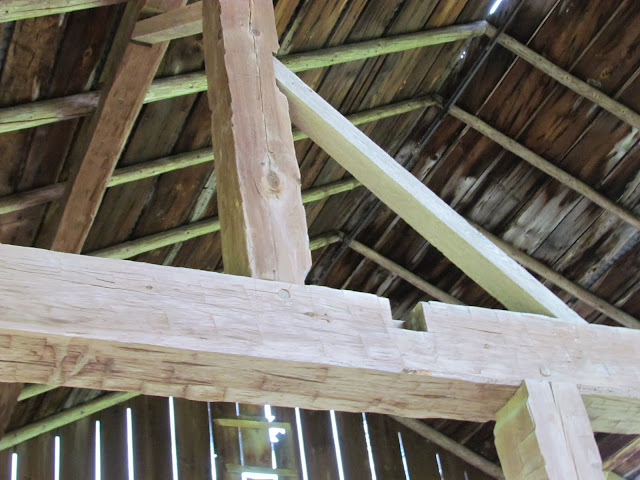Massasauga Rattlesnakes: Live and Let Live - Encounter on a busy park trail.
 |
| all photos by Jonathan Schechter Images shot on July 27, 2011 at Indian Springs Metropark This Earth Almanac blog is a photo supplement for my hiking column that appears in The Oakland Press on Sunday July 31 (www.theoaklandpress.com ) that details my surprise encounter with an adult eastern massasauga rattlesnake on the popular Hike-Bike Trail of Indian Springs Metropark. Information on our Metroparks: www.metroparks.com Detailed information on massasauga rattlesnakes from the Michigan DNR: www.michigan.gov/dnr/0,1607,7-153-10370_12145_12201-32995--,00.html Wild creatures - including rattlesnakes - have been a part of the ever changing ecological matrix in which fearful humans have evolved. Many of us have failed to come to terms with creatures with claws, big teeth or fangs. A few days ago I posted a picture (above) of a rattler sunning on the trail to Facebook with little comment beyond that it was photographed in a park in Oakland County. Over 30 comments came my way. Many praised its beauty and shared my excitment. I was especially happy with the spirituality expressed in a post and direct note from Sakoieta' Wedrick, an instructor at Brock University - Tecumseh Centre for Aboriginal Education and Research. He shared insightful thoughts on the Mohawk Community - Eastern Door Keepers of the Great Longhouse of the Iroquois Confederacy, timber rattlesnakes and their co-evolving history and human behavior. Thank you my friend! I was saddened - perhaps angered - by a post from a woman that wrote: "I try my best to make them dead." That comment screams loudly there is much needed in the way of understanding and perhaps it was her subconsious fear of flesh-eating beasts - even though we are far from a prey species - that would create such a cruel, grim comment of anger and hate towards this beautiful creature. Another wrote to say she will rescue all creatures--except for rattlesnakes. The rattlesnake I photographed was sunning peacefully on the trail just a few hours before torrential rains soaked the earth. Perhaps this highly evolved reptile sensed it was time to warm quickly to aid in digestion of whatever small meadow vole or other creature it consumed. In Michigan this shy and reclusive reptile - a true pit viper that rarely exceeds two feet - is listed as a species of Special Concern and is fully proteced by law. They are not as rare as you may think. They live in most of our Metroparks, Oakland County Parks and SE Michigan DNR State Recreation Areas as well as private lands. Their cryptic camouflage pattern and reclusive nature keeps them out of sight, most of the time. Almost all massasuaga bites occur on the dominant hand of intoxicated white males. No further comment needed there! Caution is needed around wildlife of all species. Fearful attitudes are not needed. Keep in mind Michigan has not had a rattler releated death in dozens of years, while every year, seven, eight or more people are killed in Michigan by deer that collide with cars. I was thrilled by the encounter and the calmness of others that stumbled into the unplanned viewing and stayed with me until the snake slowly turned and headed back off trail. That did not happen however until I laid down on the pavment about four feer in front of the rattler for the image above. His tail sang with a warning rattle and two things happened at once. He pulled back. I backed up. His message was sent. We established a pact of non-aggression and went our separate ways. Perhaps the rattler thought this sign along the trail meant he was to stay on the trail. |
 RSS
RSS



















































